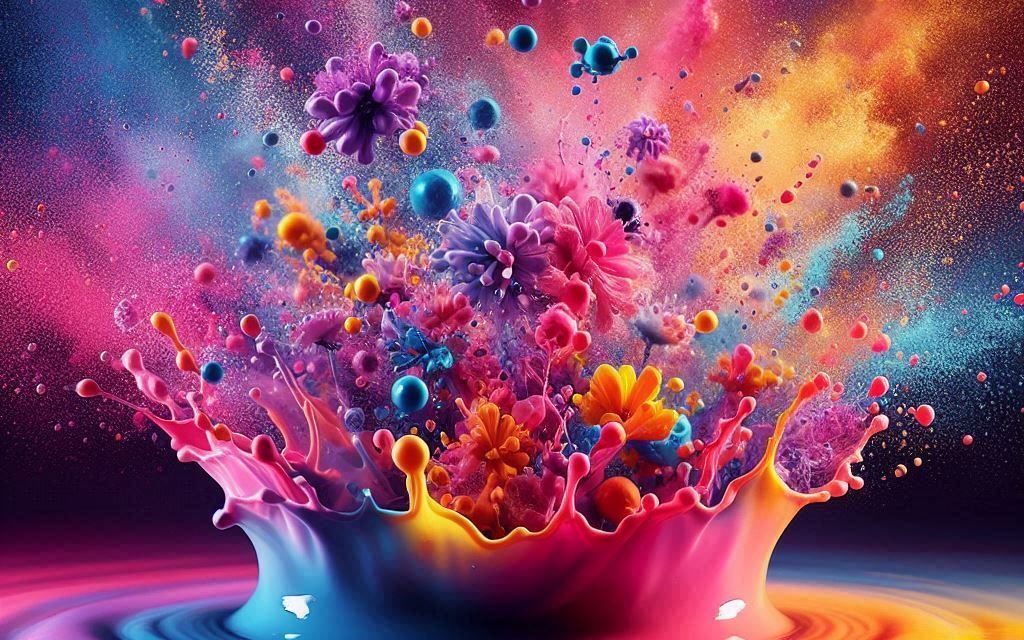Table of Contents
What Were the Main Symbols in Mayan Art?
Maya art, rich in symbolism and intricate designs, is one of the most compelling aspects of the ancient Maya civilization, which thrived in Mesoamerica for over 2,000 years. This art form, seen in everything from monumental architecture to delicate pottery, was deeply intertwined with the Maya worldview, religion, and daily life. By exploring the key symbols in Maya art, we can gain deeper insights into their complex culture and beliefs.

1. The Feathered Serpent (Kukulkan/Quetzalcoatl)
One of the most iconic symbols in Maya art is the Feathered Serpent, known as Kukulkan in the Yucatec Maya language and Quetzalcoatl in Nahuatl. This deity was believed to be a god of wind, rain, and creation, representing the dual nature of existence—combining earth and sky. The Feathered Serpent is often depicted in Maya art with a sinuous body covered in feathers, sometimes alongside human figures or other deities, signifying its importance in Mayan cosmology and religious practices.
2. The Jaguar (Balam)
The jaguar, or Balam, held a prominent place in Maya culture, symbolizing power, night, and the underworld. The jaguar was considered a bridge between the physical and spiritual realms, often associated with the elite and the warrior class. In Mayan art, jaguars are depicted as fierce protectors, sometimes shown as part human, part jaguar beings. The Maya believed that their kings could transform into jaguars, embodying the animal’s strength and spiritual power.
3. The Sun God (Kinich Ahau)
Kinich Ahau, the Maya sun god, is frequently depicted in Maya art, often as a figure with large, square eyes and a hooked nose, symbolizing his divine vision and authority. The sun god was central to the Maya pantheon, representing light, life, and the daily renewal of the world. His image appears on stelae, murals, and pottery, symbolizing not only his role in the cosmos but also the king’s divine right to rule, as the king was often seen as the earthly representative of this deity.
4. The Maize God (Hun Hunahpu)
Maize, the staple crop of the Maya, had its own god, Hun Hunahpu, who is often portrayed in art as a young man with a corn headdress, symbolizing fertility, renewal, and life. The story of the Maize God is central to the Maya creation myth, the Popol Vuh, where Hun Hunahpu’s death and rebirth represent the cyclical nature of life and agriculture. His image in art is not just a representation of the agricultural cycle but also a metaphor for the regeneration of life and society.
5. The Tree of Life (Yaxche)
The Tree of Life, or Yaxche, is a crucial symbol in Maya cosmology, representing the connection between the heavens, the earth, and the underworld. Often depicted as a Ceiba tree, it was believed to hold up the sky and connect all levels of the universe. In Maya art, the Tree of Life is portrayed with its roots in the underworld, its trunk in the earthly realm, and its branches reaching into the heavens. This symbol underscores the Maya belief in the interconnectedness of all existence and the importance of maintaining balance within the cosmos.
6. The Moon Goddess (Ix Chel)
Ix Chel, the Maya moon goddess, is another important figure in Mayan art. She is often depicted as an old woman with a serpent in her hair, symbolizing wisdom, fertility, and the cycles of life. Ix Chel was associated with childbirth, healing, and weaving, making her a vital deity for the everyday lives of the Maya people. Her image appears in various forms of Maya art, including codices and pottery, representing her role as a nurturer and protector.
7. Glyphs and Calendars
Maya art is renowned for its intricate glyphs and calendar systems, which are not just artistic elements but also important symbols of knowledge and time. The Maya calendar, a complex system of cycles, is often depicted in carvings and codices, representing the Maya’s advanced understanding of astronomy and timekeeping. The glyphs, which are part of the Maya script, convey stories, historical events, and religious concepts, highlighting the importance of written language and record-keeping in Maya culture.
Depiction of Mayan Symbols in Art: Techniques and Colors
Maya art is a rich tapestry of symbolism, technique, and color, reflecting the complex beliefs and societal structures of the ancient Maya civilization. The depiction of symbols such as the Feathered Serpent, Jaguar, Sun God, Maize God, Tree of Life, Moon Goddess, and various glyphs and calendars was executed with meticulous craftsmanship and a profound understanding of color symbolism.
1. Artistic Mediums in Maya Art
The Maya utilized a variety of mediums to express their artistry and convey symbolic meanings:
- Sculpture: Stone carvings, stelae, and architectural reliefs were common, often depicting deities, rulers, and mythological scenes.
- Painting: Murals adorned the walls of temples and palaces, illustrating religious ceremonies, daily life, and cosmological concepts.
- Ceramics: Pottery featured intricate designs and narratives, serving both utilitarian and ceremonial purposes.
- Codices: Folding books made from bark paper or deerskin contained glyphs and illustrations documenting historical events, astronomical data, and religious texts.
- Textiles: Weaving and embroidery incorporated symbolic patterns and colors, reflecting social status and cultural identity.
2. Techniques Used in Depicting Symbols
The Maya exhibited exceptional skill and innovation in their artistic techniques:
a. Stone Carving and Sculpture
- Bas-Relief Carving: This technique involved carving images slightly raised from the background, commonly used in stelae and architectural decorations to depict gods like the Feathered Serpent and rulers adorned as deities.
- High-Relief Sculpture: Figures were carved to stand out significantly from the background, providing a three-dimensional effect seen in temple facades and ceremonial platforms.
- Incised Carving: Fine lines were etched into stone surfaces to create detailed imagery, often used in smaller sculptures and decorative elements.
b. Mural Painting
- Fresco Technique: Pigments were applied to wet plaster, allowing the colors to bond with the wall surface. Murals illustrated complex scenes involving deities such as the Sun God and the Maize God, capturing narratives with vivid detail.
- Dry Painting: Pigments mixed with a binder were applied to dry surfaces, offering a different texture and finish, often seen in less formal settings or on portable objects.
c. Ceramic Art
- Polychrome Painting: Multiple colors were used to decorate pottery, depicting mythological scenes, animals like the Jaguar, and celestial bodies. Artists employed fine brushes made from animal hair to achieve intricate details.
- Sgraffito Technique: Layers of colored slip were applied, and designs were scratched through to reveal contrasting colors beneath, creating dynamic and textured images.
- Mold-Making: Clay was pressed into molds to produce standardized forms and relief designs, often featuring repetitive symbols like glyphs and calendar icons.
d. Codex Illustration
- Glyphic Writing and Illustration: Scribes used fine brushes and pigments to inscribe hieroglyphs and accompanying images onto prepared surfaces, meticulously documenting astronomical events, rituals, and stories involving deities like the Moon Goddess.
- Folded Book Format: The codices were designed to be portable and durable, with illustrations carefully organized to guide the reader through complex information.
e. Textile Weaving and Embroidery
- Backstrap Loom Weaving: Artisans wove intricate patterns and symbols into fabrics using dyed threads, representing elements like the Tree of Life and various animal totems.
- Embroidery: Detailed needlework added symbolic motifs to clothing and ceremonial garments, signifying social status and religious affiliations.
3. Colors and Their Significance in Mayan Art
Color played a crucial role in Maya art, not only enhancing visual appeal but also conveying symbolic meanings connected to their cosmology and beliefs.
a. Maya Blue
- Composition: A unique and durable pigment made from indigo dye and palygorskite clay, renowned for its vibrant and long-lasting quality.
- Symbolism: Represented sacrifice, immortality, and the sacred, often used in depictions of deities and ceremonial scenes, as well as in coloring pottery and murals.
b. Red
- Sources: Derived from hematite and cinnabar minerals, as well as from cochineal insects.
- Symbolism: Associated with blood, life, and death, red was prominently featured in depictions of the Sun God and in scenes illustrating warfare and sacrifice.
c. Yellow
- Sources: Obtained from ochre and other mineral pigments.
- Symbolism: Signified maize, wealth, and fertility, commonly used in portraying the Maize God and in decorative elements symbolizing abundance and prosperity.
d. Green
- Sources: Created from jade, malachite, and plant-based dyes.
- Symbolism: Represented the ceiba tree (Tree of Life), water, and vegetation, green was prevalent in depictions of nature, fertility, and renewal.
e. Black
- Sources: Produced from charcoal and soot.
- Symbolism: Denoted death, the underworld, and night, black was essential in illustrating the Jaguar and other nocturnal or underworld-associated deities.
f. White
- Sources: Made from lime and kaolin clay.
- Symbolism: Symbolized purity, death, and the heavens, white was used as a background color in murals and codices to highlight other colors and figures.
4. Integration of Symbols, Techniques, and Colors
The Maya skillfully integrated symbols, techniques, and colors to create art that was not only aesthetically pleasing but also rich in meaning and function:
- Temple Murals: Combined fresco techniques with vibrant colors to depict cosmological scenes, rituals, and deities, serving as instructional and devotional imagery for worshippers.
- Ceremonial Pottery: Utilized polychrome painting and sgraffito to illustrate mythological narratives and offerings, playing a role in rituals and burials.
- Stelae and Monuments: Employed high-relief carving and strategic use of color (traces of pigments have been found on some monuments) to immortalize rulers and significant events, reinforcing political power and religious authority.
- Codices: Integrated detailed illustrations and glyphs with a sophisticated color palette to document and transmit knowledge across generations.
The depiction of symbols in Maya art showcases the civilization’s profound connection between art, religion, and daily life. Through advanced techniques and a rich color symbolism, the Maya created artworks that were not only visually stunning but also deeply meaningful. These artistic expressions served as conduits for storytelling, religious practice, and the preservation of knowledge, offering us invaluable insights into the complexities of Maya culture and thought.
Exploring these artistic endeavors reveals the Maya’s remarkable ability to convey intricate concepts through a harmonious blend of symbolism, technique, and color. Their legacy continues to inspire and educate, underscoring the enduring power of art as a reflection of human experience and belief.
Maya art is a testament to the civilization’s rich spiritual and cultural life, with symbols that reflect their deep connection to nature, the cosmos, and the divine. The Feathered Serpent, Jaguar, Sun God, Maize God, Tree of Life, Moon Goddess, and their complex glyphs and calendars are just a few examples of how the Maya used art to express their beliefs and sustain their cultural identity. By understanding these symbols, we gain not only an appreciation for the beauty of Maya art but also a deeper understanding of the values and philosophies that shaped this extraordinary civilization.


No responses yet